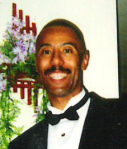“Your purpose is to make your audience see what you saw, hear what you heard, feel what you felt.” — http://t.co/KRS3Aejz6r — John Zimmer (@ZimmerJohn) June 5, 2013
I put the search term “public speaking” in to a google search box and in 0.33 seconds I had 23 million and one hundred thousand (23.100.000) results. That’s a lot of writing about about talking. So the chances are that everything that there is to say about this topic has already been said.
Then I had a flash of intuition and I changed my search terms to, “public speaking and teaching“. In 0.31 seconds I had one million five hundred and fifty thousand (1.550.000) results.
Next, I thought I would try the search term, “public speaking and learning“. I had to wait longer this time, 0.36 seconds, because there were more results, eighty five million, one hundred thousand (85.100.000).
So, what does it mean?

Credit: Fame Pictures, 2008 http://bit.ly/12RIqQL
Firstly, this is a topic that seems to be an extremely common one. Not only an award-winning actress like Tina Fey, not only a teacher and author like myself, but everyone seems to know something about public speaking. Surely no one will argue with me there.
Secondly, people talk about public speaking in connection with learning at a ratio of 85 to 1.
Since I’m no mathematician, let me rephrase what I just said. In other words, for every 85 mentions of public speaking and learning there is only one mention of public speaking and teaching.
At least that’s what an 84 million difference looks like to me.
You get one million mentions. (public speaking and teaching)
I get 85 million mentions. (public speaking and learning)
Things are definitely unbalanced. One is tremendously more common, more frequently used, than the other. As we can see, 84 million times more frequent, in fact.
Well, as I reflect on that, it seems to me that for the majority, the shared perception of public speaking is that it is a way for learning to occur, without it (public speaking) being considered as teaching.
If that is true, then the implication is that I must ask myself a question: How do I become the kind of public speaker that can make a presentation in which learning can occur, without teaching?
The answer is an obvious one, namely, by actively engaging the audience, in meaningful and purposeful ways, so that the learning is a natural outcome, or by-product, of active participation. In this sense, as we prepare for public speaking, we presenters must keep in mind that our objective is for someone to learn something, and ideally, without us teaching, but rather facilitating.
Obviously, this sounds like just another call for a focus on the learner, a student-centered approach, “guide-on-the-side” rather than a “sage-on-the-stage”. I assure you it isn’t.
What it is, however, is a consciousness-raising, an awareness that the learning already resides in the learner. We can either let this learning remain dormant, peacefully sleeping (with eyes wide open all the while), or we can activate the learner, engage the learner, so that the learners can do the learning for themselves, which in the end, is their ultimate responsibility.
Let me conclude as I have begun, by giving the final word to Dale Carnegie:
“Your purpose is to make your audience see what you saw, hear what you heard, feel what you felt.” ~ Dale Carnegie

Credit: QuoteHD.com
http://bit.ly/10LAOOY





















